
Fairbanks is a home rule city and the borough seat of the Fairbanks North Star Borough, Alaska, United States. Fairbanks is the largest city in the Interior region of Alaska and the second largest in the state. The 2020 Census put the population of the city proper at 32,515 and the population of the Fairbanks North Star Borough at 95,655, making it the second most populous metropolitan area in Alaska after Anchorage. The Metropolitan Statistical Area encompasses all of the Fairbanks North Star Borough and is the northernmost Metropolitan Statistical Area in the United States, located 196 miles by road south of the Arctic Circle.

The Trans-Alaska Pipeline System (TAPS) is an oil transportation system spanning Alaska, including the trans-Alaska crude-oil pipeline, 12 pump stations, several hundred miles of feeder pipelines, and the Valdez Marine Terminal. TAPS is one of the world's largest pipeline systems. The core pipeline itself, which is commonly called the Alaska pipeline, trans-Alaska pipeline, or Alyeska pipeline,, is an 800-mile (1,287 km) long, 48-inch (1.22 m) diameter pipeline that conveys oil from Prudhoe Bay, on Alaska's North Slope, south to Valdez, on the shores of Prince William Sound in southcentral Alaska. The crude oil pipeline is privately owned by the Alyeska Pipeline Service Company.

Walter Joseph Hickel was an American businessman, real estate developer, and politician who served as the second governor of Alaska from 1966 to 1969 and 1990 to 1994, as well as U.S. Secretary of the Interior from 1969 to 1970. He worked as a construction worker and eventually became a construction company operator during Alaska's territorial days. Following World War II, Hickel became heavily involved with real estate development, building residential subdivisions, shopping centers and hotels. Hickel entered politics in the 1950s during Alaska's battle for statehood and remained politically active for the rest of his life.
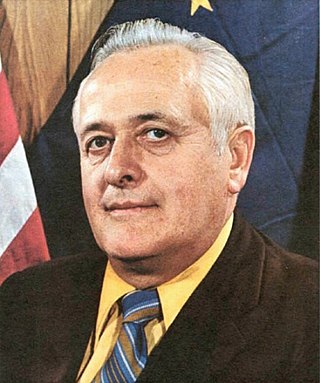
William Allen Egan was an American Democratic politician. He served as the first governor of the State of Alaska from January 3, 1959, to 1966 and 1970 to 1974, as well as a shadow U.S. Senator from Alaska Territory from 1956 to 1959. Born in Valdez, Alaska, Egan is one of only two governors in the state's history to have been born in Alaska. He was the Democratic nominee in the first five gubernatorial elections.

The Yukon Quest, formally the Yukon Quest 1,000-mile International Sled Dog Race, is a sled dog race scheduled every February since 1984 between Fairbanks, Alaska, and Whitehorse, Yukon, switching directions each year. Because of the harsh winter conditions, difficult trail, and the limited support that competitors are allowed, it is considered the "most difficult sled dog race in the world", or even the "toughest race in the world"—"even tougher, more selective and less attention-seeking than the Iditarod Trail Sled Dog Race." The originator envisioned it as "a race so rugged that only purists would participate."

John Bruce "Jack" Coghill was an American politician and businessman who was the sixth lieutenant governor of Alaska from 1990 to 1994, serving under Governor Walter Hickel. Both were members of the Alaskan Independence Party.
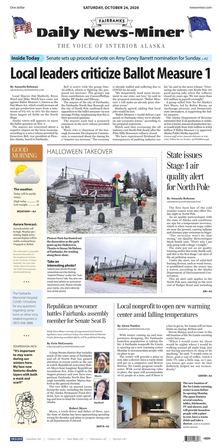
The Fairbanks Daily News-Miner is a morning daily newspaper serving the city of Fairbanks, Alaska, the Fairbanks North Star Borough, the Denali Borough, and the Yukon-Koyukuk Census Area in the U.S. state of Alaska. It is the farthest north daily in the United States, and one of the farthest north in the world. The oldest continuously operating daily in Alaska, by circulation it is the second-largest daily in the state. It was purchased by the Helen E. Snedden Foundation in 2016. The Snedden family were longtime owners of the News-Miner, selling it to a family trust for Dean Singleton and Richard Scudder, founders of the Media News Group in 1992.
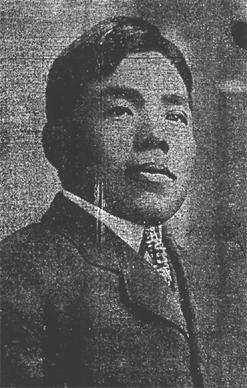
Jujiro Wada was a Japanese adventurer and entrepreneur who achieved fame for his exploits in turn-of-the-20th-century Alaska and Yukon Territory.

Karen Patricia "Pat" Pitney is an American university administrator, former Alaska state government official, and Olympic gold medalist. She is the president of the University of Alaska system.

David Guttenberg is an American politician serving as a member of the Fairbanks North Star Borough Assembly. A member of the Democratic Party, he was a member of the Alaska House of Representatives from 2003 to 2019, after which his nephew, Grier Hopkins, succeeded him.

Felice Pedroni, commonly known by his Hispanicized alias Felix Pedro, was an Italian immigrant whose discovery of gold in Interior Alaska marked the beginning of the 1902 Fairbanks Gold Rush.

Documerica was a program sponsored by the United States Environmental Protection Agency to "photographically document subjects of environmental concern" in the United States from about 1972 to 1977. The collection, now at the National Archives, contains over 22,000 photographs, more than 15,000 of which are available online.

The history of Fairbanks, the second-largest city in Alaska, can be traced to the founding of a trading post by E.T. Barnette on the south bank of the Chena River on August 26, 1901. The area had seen human occupation since at least the last ice age, but a permanent settlement was not established at the site of Fairbanks until the start of the 20th century.

The 1972 United States House of Representatives election in Alaska was held on November 7, 1972, to elect the United States representative from Alaska's at-large congressional district. Incumbent Democratic Representative Nick Begich Sr. went missing shortly before the general election, but still defeated Republican nominee Don Young.

Mary Jane Fate was a Koyukon Athabascan activist. She was a founding member of the Fairbanks Native Association and the Institute of Alaska Native Arts and worked as a lobbyist for the Alaska Native Claims Settlement Act. She co-founded the Tundra Times newspaper and served as a director of the corporate board for Alaska Airlines for over two decades. She served as co-chair of the Alaska Federation of Natives between 1988 and 1989, the first woman to serve in the capacity, and was the third president and a founding member of the North American Indian Women's Association. Fate has served on various commissions and national studies of issues which affect indigenous people. She was the project manager of a study of women and disability, served as the only indigenous member of the U.S. Arctic Research Commission and was a member of U.S. Census Advisory Committee on indigenous populations. She has received numerous honors and awards for her activism on behalf of Native Americans and was inducted into the Alaska Women's Hall of Fame in 2014.

The 1973 Alaska's at-large congressional district special election was held on March 6, 1973, to elect the United States representative from Alaska's at-large congressional district. Incumbent Democratic Representative Nick Begich Sr. had won reelection in 1972, but had gone missing shortly before the election.
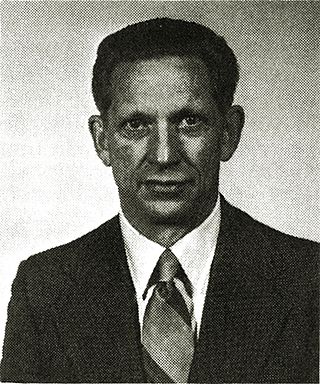
Max Clifton Brewer (1924–2012) was an Arctic scientist, geophysicist, geological engineer, environmentalist, educator, and philosopher, and is best known for his expertise in the scientific field of permafrost. He was the longest-serving director (1956-1971) of the Naval Arctic Research Laboratory (NARL) in Utqiaġvik, Alaska where he established and managed the NARL ice stations in the Arctic Ocean. From 1971-1974 he served in the gubernatorial cabinet of William A. Egan as the first commissioner of the Alaska Department of Environmental Conservation.
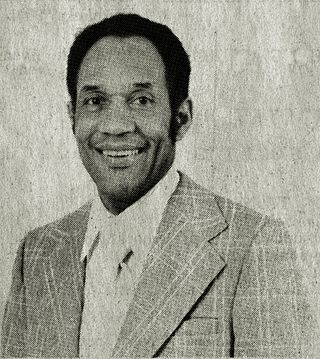
Selwyn George Carrol was an American politician who served as a member of the Alaska House of Representatives from 1972 to 1974.

The USCGC Sweetbrier (WAGL-405/WLB-405) was an Iris-class 180-foot seagoing buoy tender operated by the United States Coast Guard. She served in the Pacific during World War II. Her entire post-war career with the Coast Guard was spent in Alaska. After she was decommissioned in 2001, she was transferred to the Ghana Navy and renamed Bonsu. She is still active.
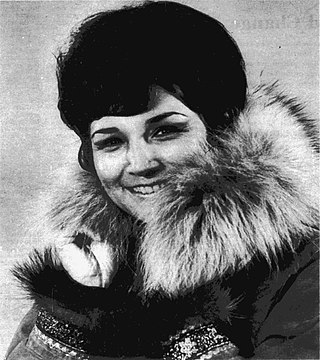
Laura Mae Bergt was an Iñupiaq athlete, model, politician, and activist for the Iñupiat and other Indigenous Alaskans. Born in the Northwest Arctic Borough of Alaska to bi-racial parents, she grew up in Nome and Kotzebue before attending high school in Sitka. Involved in the Native Olympic movement, she was both a nine-times winner of the Arctic Circle blanket toss event and served as chair of the World Eskimo Indian Olympics in 1966. She worked as a promoter for the new state of Alaska attending trade shows and making marketing appearances as a spokeswoman and guest on radio and television programs. From the 1960s, she worked in various policy positions at the tribal, local, state, and national level to address issues like disability, education, employment opportunities, housing, and poverty, and promoting the rights of Indigenous people.


























